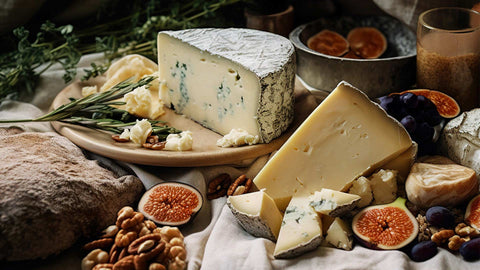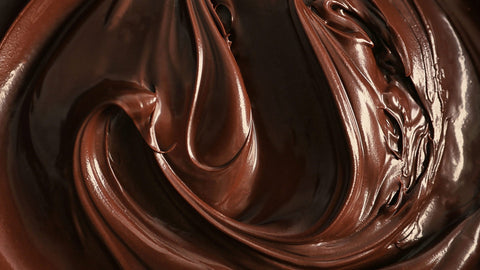Pungent, creamy, and with a sharp, intense bite, one can immediately tell that blue cheese is not just any ordinary cheese. If the blue pigments that give this cheese its signature appearance and flavor seem to possess a strangely mildewy quality, that’s because they are, in fact, mold. However, unlike other types of mold, the Penicillium Roqueforti and Penicillium Glaucum fungal cultures found in blue cheese are non-toxic and safe for humans to consume. Blue cheese is an acquired taste, so it’s worth wondering how cheesemakers came to discover this unique delicacy in the first place.
According to legend, a French shepherd was resting inside a cave, and was about to take his midday meal of bread and cheese. Before he began, however, a maiden passed by, and he was so distracted by her beauty that he left his lunch inside the cave. Months later, he returned to the cave where he found the cheese that he had left behind—now covered in blue mold that gave the cheese a strong, distinct flavor. He shared his discovery, and it turned out not only to be safe to eat, but also delicious, especially with wine!
Today, the finest varieties of blue cheese, such as Roquefort, Gorgonzola, and Stilton, are still produced in caves. The controlled environment of caves provides the ideal conditions for the mold to develop. The mold in blue cheese is typically Penicillium. First, the cheese is made from cow, sheep, or goat’s milk. Next, the cheeses are placed in caves and pierced with blue (copper) rods or wires, allowing oxygen in, which the molds need in order to grow. From there, the aging process varies depending on the type of cheese.
Some find the taste and smell of these traditionally grown cheeses to be too strong for their liking. For those that prefer milder blue cheeses, Danish Blue or Cambozola—a blend of Camembert and Gorgonzola—are popular choices. Both options offer a milder and more balanced taste for those who enjoy the idea of blue cheese but without the overpowering intensity.
Eating blue cheese can be a delightful experience. It is worth exploring different varieties to find the blue cheese that best suits your taste and preferences. Whether you like your cheese strong or mild, here are some of the best wine and food pairings to help you savor the experience:

Port or Sweet Dessert Wine
The sweetness of a port wine or a dessert wine complements the bold and salty flavors of blue cheese.
Cabernet Sauvignon
A full-bodied red wine like Cabernet Sauvignon can stand up to the strong taste of blue cheese, creating a balanced combination.
Grapes
Fresh grapes, especially red or black varieties, provide a sweet and juicy contrast to the salty and tangy profile of blue cheese.
Honey
A drizzling of honey adds sweetness and depth to blue cheese. This pairs well with a variety of wines, including sparkling wines.
Pears
Sliced pears offer a sweet and slightly crisp element that complements the creaminess of blue cheese.
Crackers or Baguettes
A simple and classic choice, crackers or a crusty baguette can provide a base for the cheese without overwhelming its flavors.
For more recommendations, you can visit The Charcuterie section at Joel’s Place. Our knowledgeable staff will be delighted to help you taste and explore our variety of cheeses.





